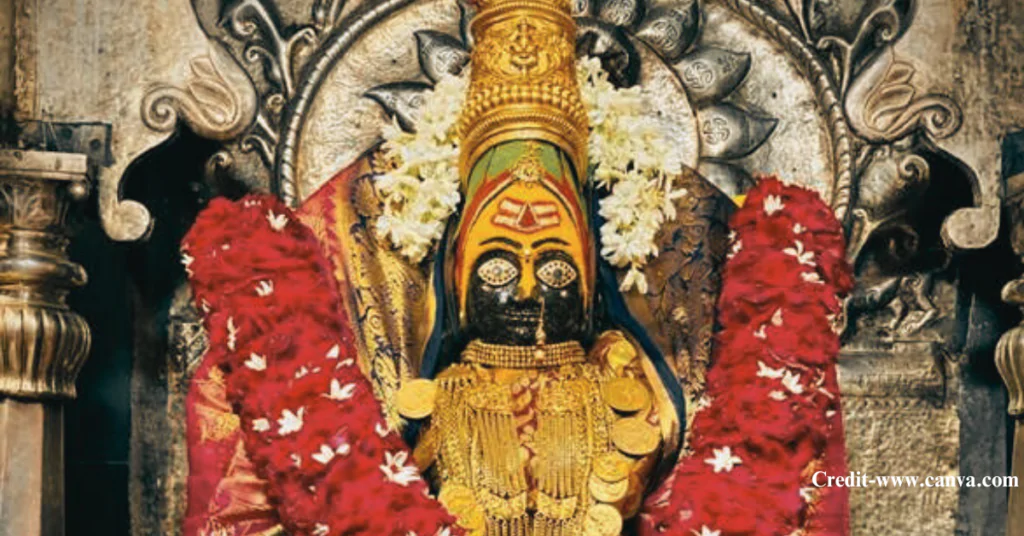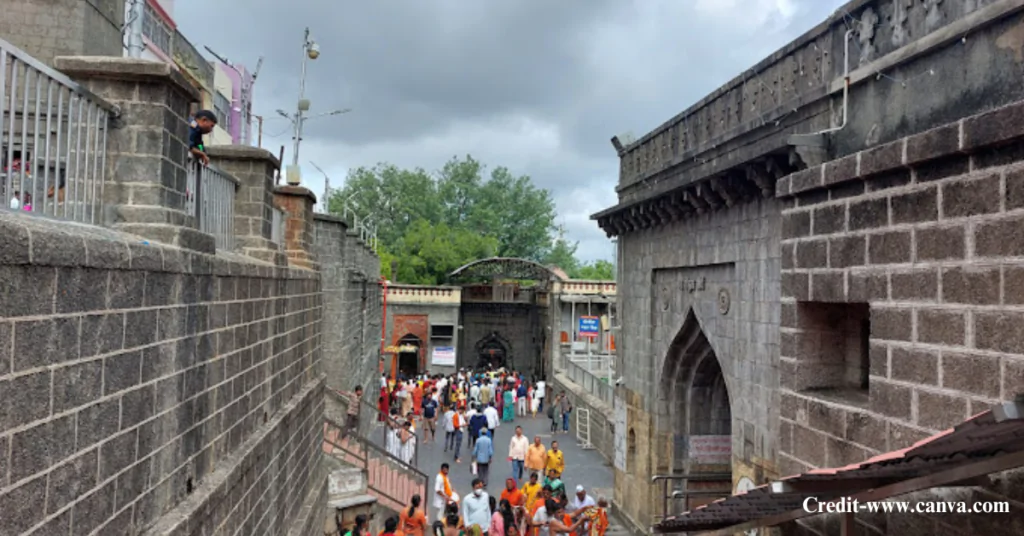Located in the serene town of Tuljapur in Maharashtra, the Tuljapur Temple, dedicated to Goddess Tulja Bhawani, is a source of peacefulness. This is not a place that is only visited while on a marathon temple run; instead, this place blesses millions year after year with the comfort of a mother and the fierce protection of a deity.
Goddess Tulja Bhavani is known as the goddess who is the potent embodiment of power and justice simultaneously. That’s why people of all ages come to this goddess, seeking her help and advice or even gaining peace of mind. Before preparing for one of India’s loved temples, here’s all you need to know.
Table of Contents
Overview of Tulja Bhavani Temple
Tulja Bhavani is much more than a goddess; she is a maternal figure for her worshippers, who call her Aai Bhavani or Jagdamba. It is said that she can raise the energy level of one besieged by negative emotions such as anger, envy, or sadness. In the temple, one imagines a group of people bowing with their hands together and eyes full of hope and devotion. Tuljapur Temple is one of the three and a half Shakti Peethas of Maharashtra, which shows why there is so much devotion towards the place and the people of that region.
Importance of Goddess Bhavani

Goddess Bhavani protects her followers and gives them immense strength. Even Chhatrapati Shivaji Maharaj, the great warrior of the Marathas, used to pray to her before he went to war. He and his followers stood before the idol for generations and instilled a power much deeper than sheer military courage. Her esteem has only increased over the years, with the belief of her pilgrims, who go to her for the same strength and grace.
Tuljapur Temple History

Centuries have passed since the establishment of the Tuljapur Temple, which is enshrouded in stories and history. Built, as it is said, by ancient kings who were firm devotees of Bhavani, the temple’s architecture narrates the story of a deep-rooted history. One well-known tale states that Goddess Bhavani presented Shivaji Maharaj with a sword used as a protective trove for his kingdom and its subjects. Definite evidence of such a history can be sensed in the temple today – each block of stone, even every carving, bears an imprint from the past.
Tuljapur Temple Timings and Entry Rules
Planning your visit? Here are the temple timings:
| Day | Morning Timings | Evening Timings |
|---|---|---|
| Monday to Sunday | 4:00 AM – 12:00 PM | 4:00 PM – 9:30 PM |
Pro Tips for Visiting: Reaching the shrine in the morning can help you enjoy a more tranquil singing of the deity, mainly if the visit is on weekends and public holidays. Most importantly, do not forget to pack some patience as well—there are usually people, but it’s all worth the struggle. If one tries to be respectful, it would be good to wear conservative clothing, bearing in mind that the temple is sacred.
Tuljapur Temple Darshan Process
Upon entering the sanctum sanctorum, one can see a properly laid-out queue with temple assistants directing visitors’ movements. In case you would like to make an offering, stalls selling coconuts, flowers, and sweets—offered to the goddess—can be found nearby. While standing in the queue, the surrounding sense of faith and devotion among other visitors is almost tangible, making one even more eager to engage with the goddess.
Tulja Bhavani Temple Architecture

The temple’s architecture is beautiful, filled with elaborate, thin sculptures and ancient Hindu architecture. Exteriors and interiors have square shrines and statues that are deeply respectful in their angles and execution. The central figure of Bhavani is clad in regalia and garnished with fresh flowers, a breathtaking and majestic sight even in the souvenir you will have. It is not only the figure of the goddess that will enthrall you in that temple but also the beautiful details of the artistry that make that particular temple stand out.
Festivals and Celebrations

To experience the true spirit of the temple, schedule your visit to these festivals—Navratri or Chaitra Purnima. Preparing for the nine days of Navratri is action-packed, as the temple is entirely decorated with colorful lights and flowers, and rituals are performed nonstop. Other festivals like Makar Sankranti and Ashwin Purnima attract many people, and their devotion during these times makes the trip even more special.
Best Time to Visit Tuljapur

Invariably, the most suitable period to plan a visit to Tuljapur will be between October and February in the winter, when the weather is more conducive for outdoor activities. During this period, especially in summer, the temperatures are likely to reach great heights, an aspect that is unfavorable for outdoor forms of adventure. Therefore, if you are looking forward to the temple and other nearby attractions, you should consider going during winter.
How to Reach Tuljapur Temple
Reaching Tuljapur is very simple by road from Pune, Solapur or Hyderabad. The closest airport is at Solapur, from where one has to take a taxi or bus to the temple. The roads to Tuljapur are mainly well-constructed, and those who like driving are in for a delight.
Accommodation Options Near Tuljapur Temple
Lodgings in Tuljapur range from lodges well within budget to guesthouses slightly more expensive. For those wishing to be near the temple and look for simple and inexpensive accommodation, Tuljabhavani Bhakt Niwas is a good option.
Final Thoughts
If one thinks of taking a whiff of history, visiting the Tuljapur Temple is not worth the effort. It is an experience that elevates one’s appreciation for Maharashtra’s tireless and sincere devotion to Goddess Bhavani. Blessings, peace, or culture in other cases, this temple evokes feelings and emotions long after the visit.
When you face the divine image of Goddess Bhavani, encapsulated by the sights, sounds, and even smells of worship, you will understand why many hold this place dearly.

